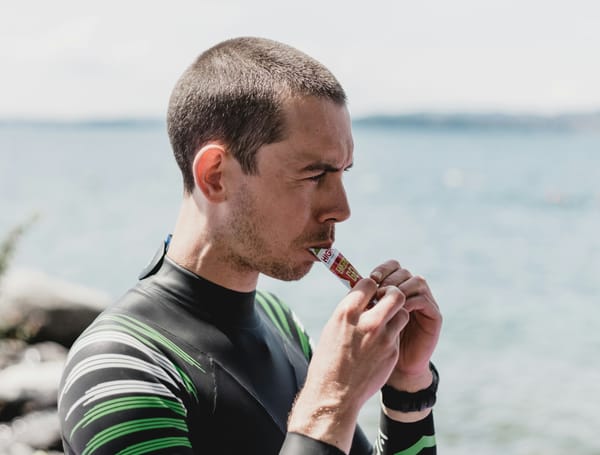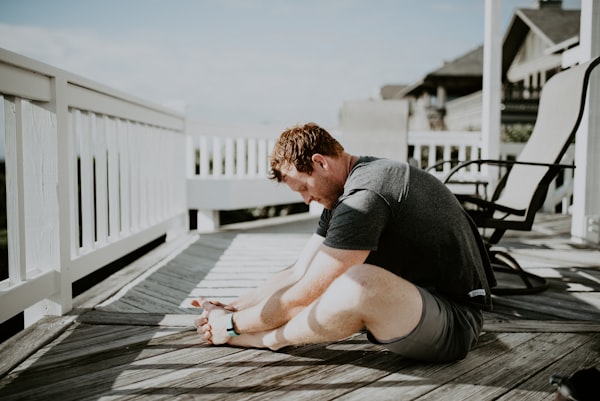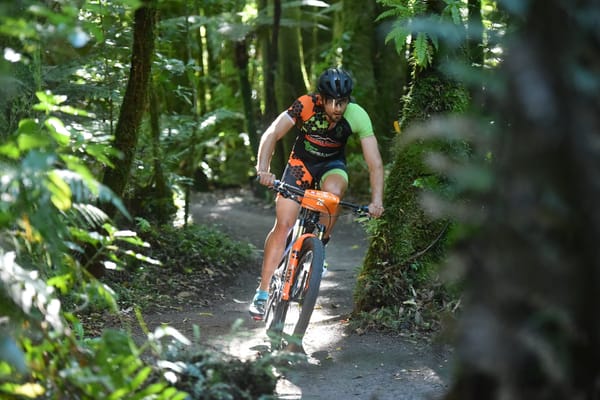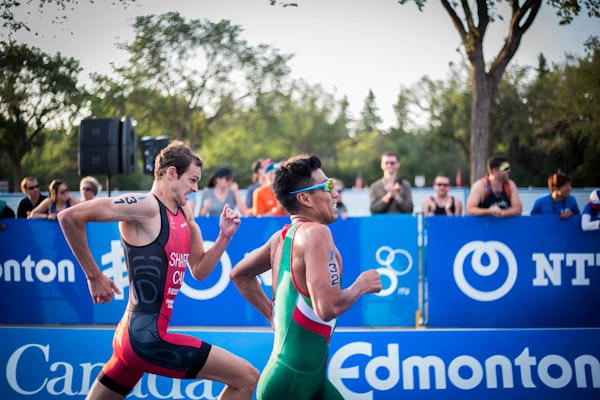Matt Dixon – The Purple Patch Story
Matt Dixon is one of the world’s best triathlon coaches, and his squad is only growing. Despite a unique approach, Dixon’s philosophy behind his squad Purple Patch is working. Trizone caught up with Dixon to uncover this sport-changing philosophy. Matt Dixon didn’t follow his philosophy in his own j
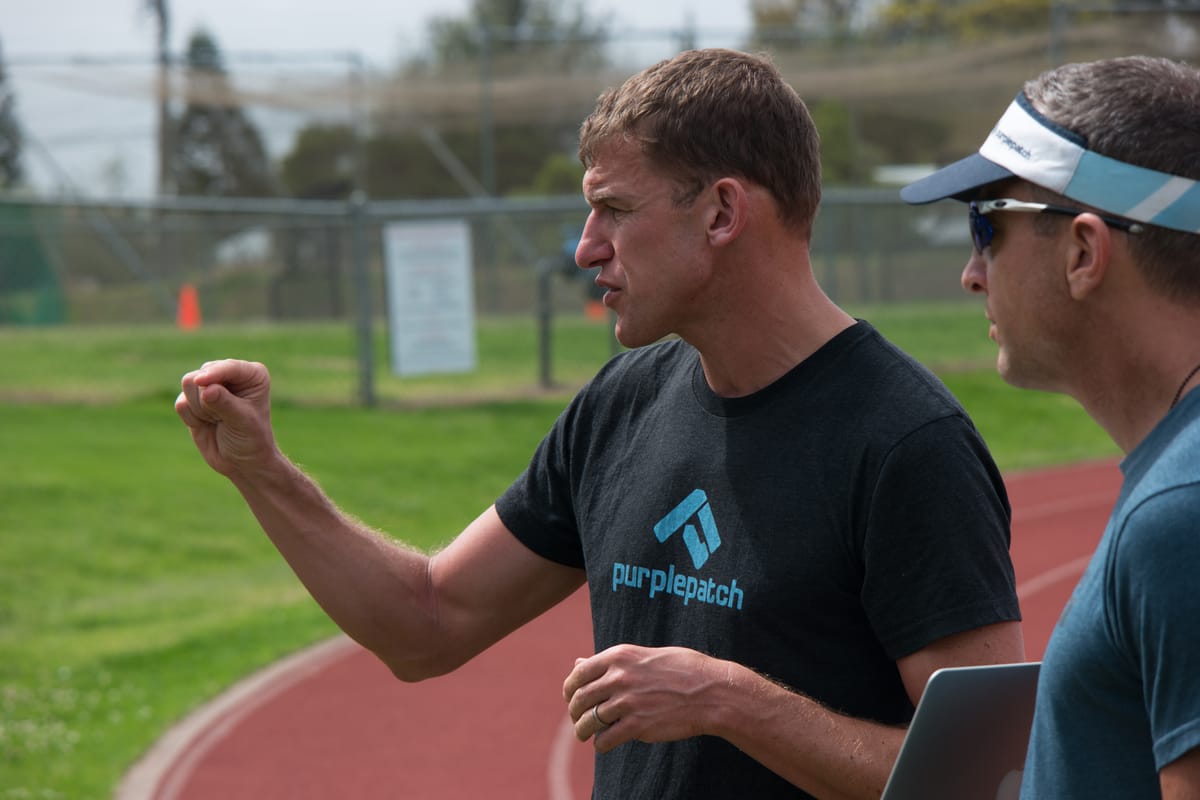
Matt Dixon is one of the world’s best triathlon coaches, and his squad is only growing. Despite a unique approach, Dixon’s philosophy behind his squad Purple Patch is working. Trizone caught up with Dixon to uncover this sport-changing philosophy.
Matt Dixon didn’t follow his philosophy in his own journey as an athlete, which in itself provided plenty of lessons to him as a coach. “I grew up on the East side of London, in Essex,” Matt told Trizone. “It comes with its reputation, similar to New Jersey’s Jersey Shore,” laughed Dixon.
Learning to swim early starts career
The youngest of three brothers, Dixon grew up being competitive with his siblings who were also athletes. “You get lessons thrown at you without realising,” said Dixon. Matt’s Mum was a ‘learn to swim’ coach who taught Dixon to learn to swim very early in life. “I grew up in the water,” said Matt, “by the time I was twelve, I was going to the national championships for swimming.”
Like so many other young athletes though, when Matt Dixon was a young teenager, he lost interest in elite sport and became more interested in going out with friends. “I didn’t really do anything much, I just played a bit of soccer,” said Matt.
By sixteen though, Matt decided he wasn’t quite finished with swimming. “I got back to swimming but was on a skeleton program relative to my future collegiate program. But I ended up qualifying for the Olympic trials, and getting to the finals at the trials in 1992,” said Matt. Without realising it, Dixon had just experienced the essential elements of the Purple Patch philosophy that he’d come to develop.
Dixon was offered a swimming scholarship in the United States, and since then he’s never looked back. “The opportunity was amazing,” said Matt, “to go to America and have four years of University paid for and to be in in a team environment was amazing. I’d never been to the US before, and I ended up at the University of Cincinnati to study exercise physiology,” said Dixon.
University swim training sparks race career
“At University, I set the goal of going to the Olympics in Atlanta in 1996,” said Dixon. Here the famous coached paused, almost as though the story he was about to tell was life-changing, which it turned out to be. “Our swimming training was huge volumes, around 24-26 hours of swimming each week. That’s about 80-100 thousand yards a week, all to get ready for an event that was four minutes in duration,” said Dixon.
While Matt Dixon was working insanely hard to qualify for the Olympics, the huge mileage was working against him. “I brought a world-class attitude to training,” said Matt, “but the outcome wasn’t world class. I didn’t make the Olympic team in 1996, but I did get a university education with no debt,” smiled Dixon.
After swimming throughout his undergraduate degree, Dixon turned to coaching. “I had a few years coaching swimming then went back to get my Masters in Exercise Physiology,” said Matt. “I got to coach on a great age-group swimming program, then a division one University swimming program.”
Dixon discovers triathlon
During his Masters degree, Dixon discovered triathlon. “I thought I’d give it a go and I did well,” said Dixon, “People said ‘go and give it a crack as a pro,’ and I did, although, in reflection, I am a great example of how to set up a professional career poorly” added Dixon.
After his experience of training for the Olympics, Dixon decided to succeed in Ironman he’d need to increase his mileage even more.
“I thought, if I was training for 26 hours for a four minute event, then I’d need huge volumes to train for a long event like triathlon.”
Without a running background, Matt decided he’d need to run really really long distances to get into shape. “I’m lucky to be pretty injury resistant, but it was almost a curse because I never got injured, I just destroyed my system,” said Dixon. “Despite my education in physiology, I replicated my mistakes and trained myself into the ground.”
Extreme burnout threatens Dixon’s athletic abilities
Three years into his pro triathlon career, Dixon started coaching other triathletes. “I realised ‘what I’m doing is stupid,’ and I ended up with some form of chronic fatigue,” remembered Dixon.
“It was physical, emotional and mental burn out. Just complete burn out.”
“I couldn’t exercise for around 18 months, it was very serious burnout,” said Matt. “Systematically I was not functioning well. It was the best thing that could have happened to me in hindsight. I was coaching then, but it forced me to take a step back,” said Matt. “It ended my triathlon career and I was at a crossroad.”
The time off helped Matt look at triathlon objectively, from afar.
“I looked at age groupers and pros, and realised the validation of success was based almost solely on accumulation of training hours.”
Dixon looked back at his own triathlon career and saw his own faults were important aspects of the sport. “I saw almost everyone was doing a lot of things poorly. Anything related to recovery, nutrition or strength and conditioning wasn’t done well,” said Dixon.
“Pros and age groupers were showing up to races fit and fatigued. I always wanted to have athletes be fit and fresh instead.”
It’s this observation that cemented the philosophy of Matt Dixon’s now world-famous Purple Patch triathlon squad. “It was such a dogmatic approach,” said Dixon. “People were taking the approach of pros and watering it down and applying it to amateurs, but ignoring all the other factors in life,” said Dixon.

“Coaches and trainers encouraged poor habits and lacked understanding around fuelling and nutrition. They talked about recovery that never really happened,” said Matt.
Dixon’s philosophy sparks controversy as ‘an easy way out’
“A lot of people really bought into what I was trying to put across, where some others were really put off,” said Dixon.
“Some people thought I was trying to say there was a shortcut to success and that the best path is to always do less, but that’s not it at all.”
Dixon was under fire, but he stuck to the new-found philosophy he’d founded after his own journey in the sport. “I was coaching pros and age groupers and having really good results,” said Dixon.
Pros discover Purple Patch
“I started Purple Patch with some well-known athletes and some not,” said Dixon. “In the early days, one of my amateurs won her age group in Hawaii; she became my first professional Tyler Stewart,” said Matt Dixon. “She went on to become a very successful pro, winning Ironman races while maintaining a day job in San Francisco. That was more than ten years ago,” Dixon told Trizone.
In 2008, Chris Lieto approached Dixon to become a Purple Patch athlete, as his brother Matt was already coached by Purple Patch. “He was already a world-class athlete,” said Dixon, “He asked me ‘why the hell should I be coached by you? I used to beat you every time we raced?’” laughed Matt. With his new-found perspective though, Dixon had the perfect answer.
“That’s exactly why you should be coached by me. I’ve learned from all the mistakes.”
Working with Chris Lieto helped cement Matt Dixon’s new philosophy. “I saw he had the benefits of years of training, but the supportive components of nutrition, fuelling, strength and conditioning and recovery weren’t there,” Dixon told Trizone. “I felt like he was doing way too much for the end of his career.” Dixon’s respect for Lieto is still very apparent even now. “I told him we should be doing things differently and he was amazing. He just jumped in and said ‘yes, let’s do it.’”
Dixon took Lieto’s commitment and made some huge changes. “We radically increased his caloric intake, reduced how often he went hard and reduced his total training hours,” said Dixon. “He ended up really improving as an athlete. He started to be truly able to run off the bike, running a 1:13 off the bike not 1:17,” said Dixon.
In 2009, Lieto finished second at Kona, beaten by well-known Aussie athlete Crowie. “That was a huge moment for me as a coach,” said Dixon, “now ten years later I’m just learning more and more and still trying to work it all out. That was really the start of our now long-standing professional squad,” said Dixon.
Purple Patch isn’t right for everyone
Despite Dixon’s rich history of athlete development, such as Jesse Thomas, Meredith Kessler, Sarah Piampiano, Tim Reed and Sam Appleton, Dixon believes his philosophy isn’t right for every professional athlete. “One of the first things I do when a pro reaches out to me is I make them go and talk to other coaches,” said Dixon. “It’s important the athlete find the right coach for their journey. Too many coaches simply aim to add numbers, but we don’t own the athlete. I want to ensure I am the right coach for each athlete.”
Some of these athletes do choose other coaches, which is what Dixon wants them to do. “Some of them do really well, and that’s great!” said Dixon, “I just want what’s right for them if they weren’t right for Purple Patch.”
“I’m really deliberate about whether I’m going to take on an athlete and help them.”
Dixon likes to assist the journey of a pro
Even though some of his amateur athletes have earned their pro cards, Dixon won’t let them compete in the pros just yet. “Sarah Piampiano had great aspirations,” said Matt, “she was an age grouper and she wanted to be a pro. All the other coaches she interviewed for coaching told her ‘go pro and learn the ropes,’ but I was quite the opposite. I told her if she went pro I wouldn’t coach her, as I didn’t feel she was ready physically or mentally. You can only transition into the pro ranks once, and the timing is really important for long-term development”
Piampiano listened to Dixon, and decided to adopt his long-term approach despite being frustrated with the decision. “She understands the long term, she’s the ultimate ‘Purple Patch’ athlete in a fit way,” said Dixon. “She did two years as an amateur before she went pro but when she did, she was ready to compete and able to grow from within the ranks. This creates the path toward World-Class. Her situation was magnified as it was her swim that was her weakness.”
“I told her it doesn’t matter how good your running is, it can be career-ending and very deflating if there’s tumble weed going across the race course when you get out of the water.”
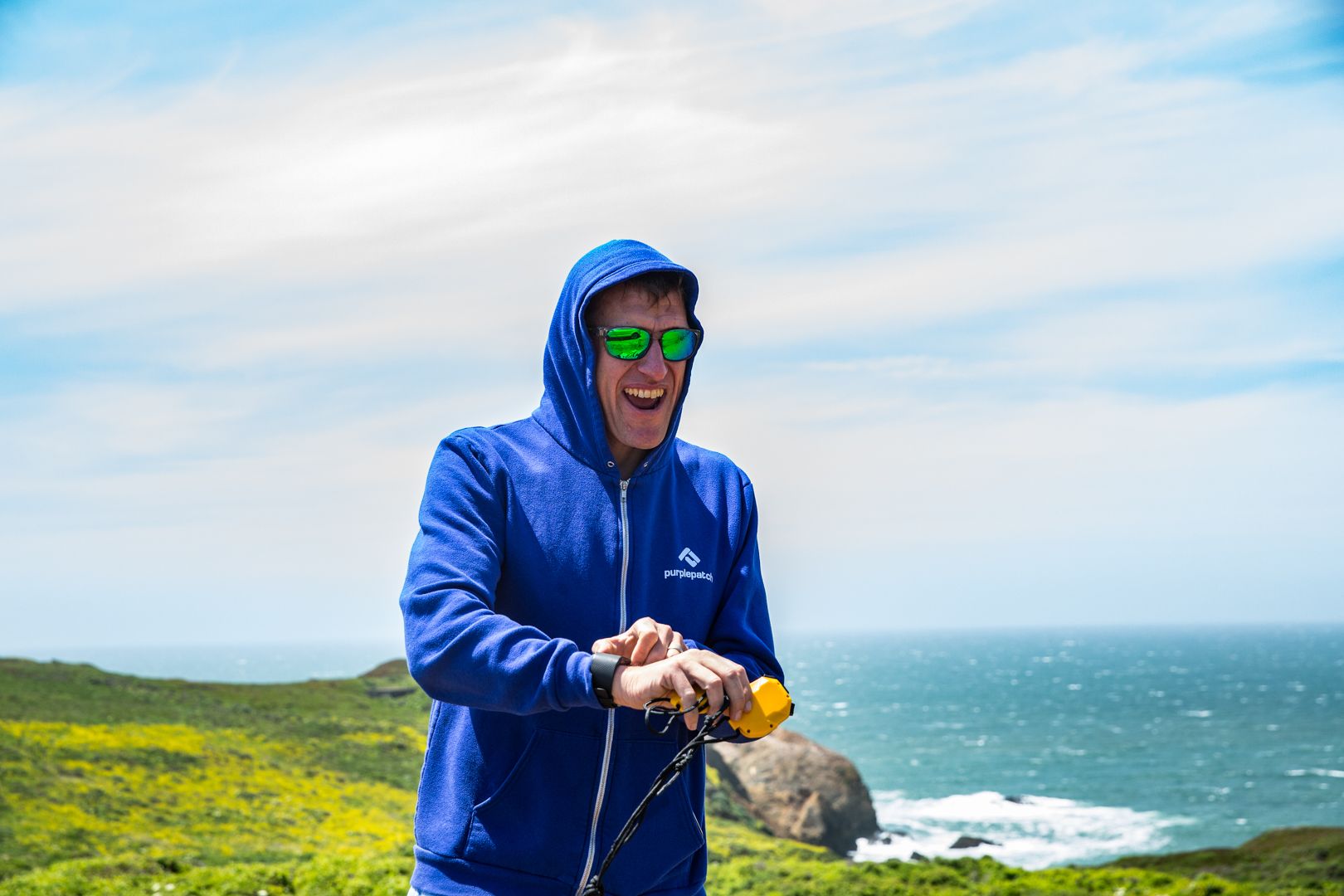
Another impressive athlete, Meredith Kessler, went through a similar journey with Matt Dixon. “For one and a half years, she raced as an amateur even though she was qualified as a pro,” said Dixon, “when she went pro she could swim, ride and run,” said Dixon.
The admiration Dixon has for his athletes who stick to the Purple Patch plan and work hard through their journey as an amateur is palpable. “Laura Siddall won Ironman Australia this year. She’s had one of the most impressive 2017 of any athlete,” said Dixon. “So many people in her situation would have quit after the mental and physical challenges of her first professional year in the sport. We were trying to get the recipe right,” said Matt.
“She never wondered if she was in the right program. She was confident we’d get the right answer.”
Purple Patch is for everyone
“We’re based in San Francisco, and we offer real squad coaching with cycling, running, swimming and strength on a daily and weekly basis,” said Dixon proudly, “we have a wonderful community here.”
While many of Dixon’s athletes are highly committed professional and amateur triathletes, some of Dixon’s athletes are simply busy working people looking for fitness, while others are trying to get back to activity following suffering chronic fatigue.
“It’s a melting pot of high performance, business and sport,”said Dixon of San Francisco. “That makes for an ego-free environment; everyone is diluted in some way. It’s a really nice culture.”
While Dixon’s Purple Patch coaches people all over the world, Dixon’s approach is far from generic. “When we delivery anything, we never deliver a stock-standard plan,” said Matt, “In support of that, my biggest passion is education and each athlete is different,” said Matt Dixon.
Purple Patch’s Sweet Spot
Dixon is proud to offer a training solution for the very busy athlete; busy people who are trying to integrate triathlon into a really busy life. “It’s for people who want a positive effect on their health, energy at work, and want to bring a better self to their social life and family and friends,” said Matt Dixon.
Rather than asking athletes to work with a pre-designed program and jam it into their already busy lives, Dixon offers a fresh approach. “We offer a distinct philosophical difference.”
Purple Patch has amateur athletes who train as much as they can, which isn’t nearly as much as some, yet they have impressive results. “We have an athlete who became Hawaii World Champion in his age group who never trained more than twelve hours a week,” said Dixon. “He is genetically gifted and has the lungs of an elephant,” laughed Matt, “however, the key takeaway is that if I would have prescribed 16 hours a week, he almost definitely would have failed. He simply had too many other life commitments with his family and being founder and COO of a major tech company. We were optimising the very strict time limits he had available.”
Training CEOs for peak performance
Matt Dixon’s infamous coaching style is beloved by CEOs thanks to his approach. “CEOs are some of the busiest people in the world,” said Dixon.
“The barometer of success for those guys is if they become more successful leaders and if they have more time and energy to bring and enhance critical thinking.”
CEOs want an overall improvement in health, fitness, and performance in all aspects. “The value comes in them becoming a better elite performer in the business world. That’s what they like,” said Dixon.
Purple Patch approaches CEO’s travel the same as pro travel, which helps enhance their performance in the boardroom. “We use the same fuelling habits to make sure their energy levels stay consistent, and that’s just one part of it.”
Why everyday people choose Purple Patch
Plenty of amateurs who train with Dixon are everyday people looking for a competitive path towards wellness. “Sleep and exercise are always the first casualties,” said Dixon. “Then they get over-stressed because they’re not managing all their commitments. Critical thinking is reduced and energy reduces,” said Dixon. “That’s not just me saying that it’s all evidence-based.”
With an iron-clad philosophy, it’s no surprise Matt Dixon has trained some of the world’s most successful triathletes. Check back into Trizone soon to see how you can get your hands on Matt Dixon’s world-class training approach.

